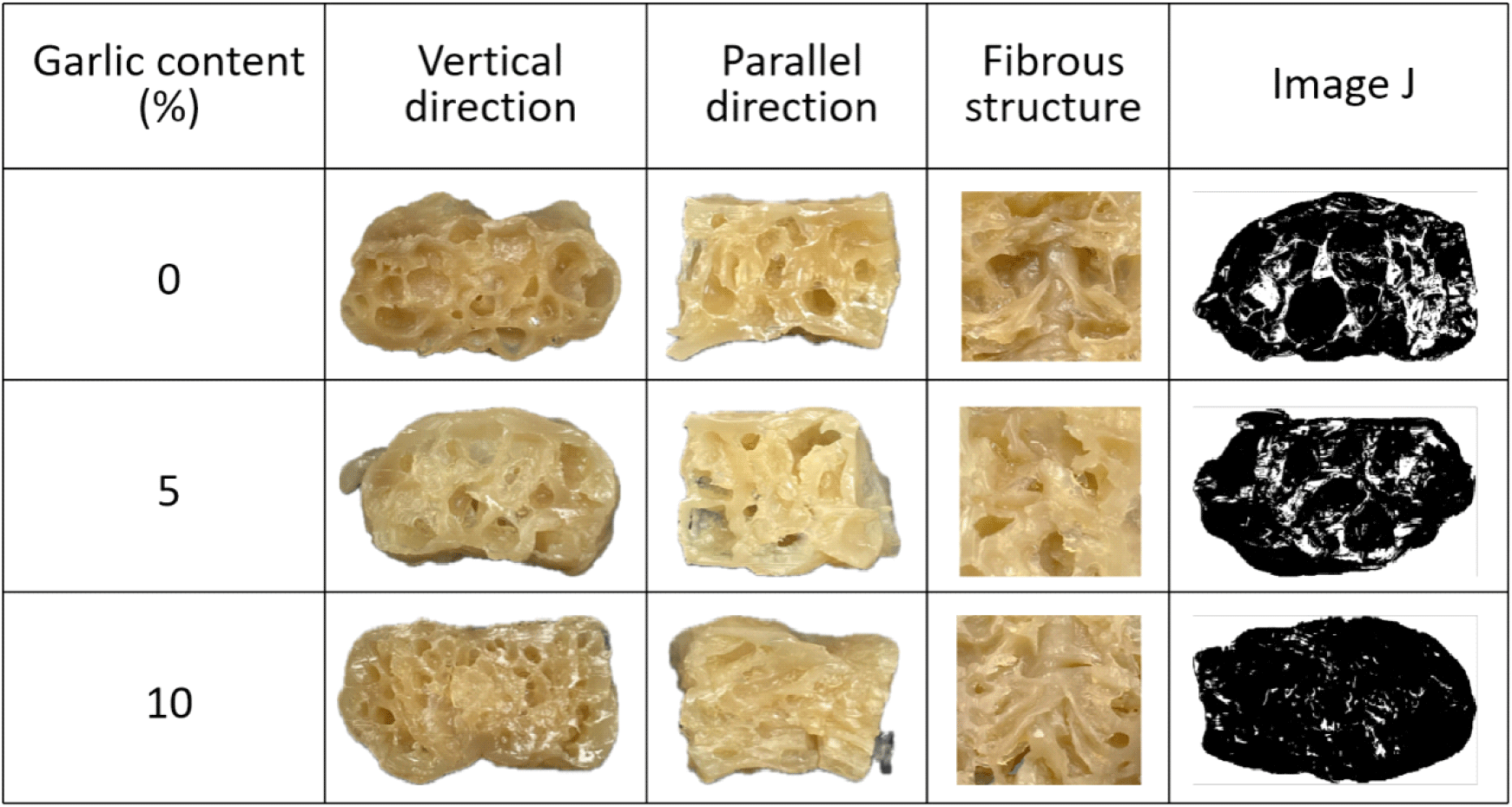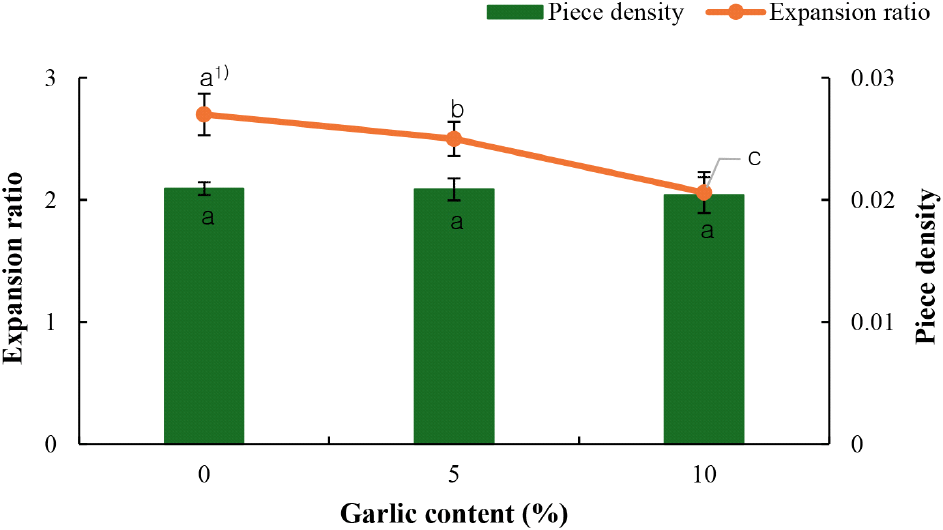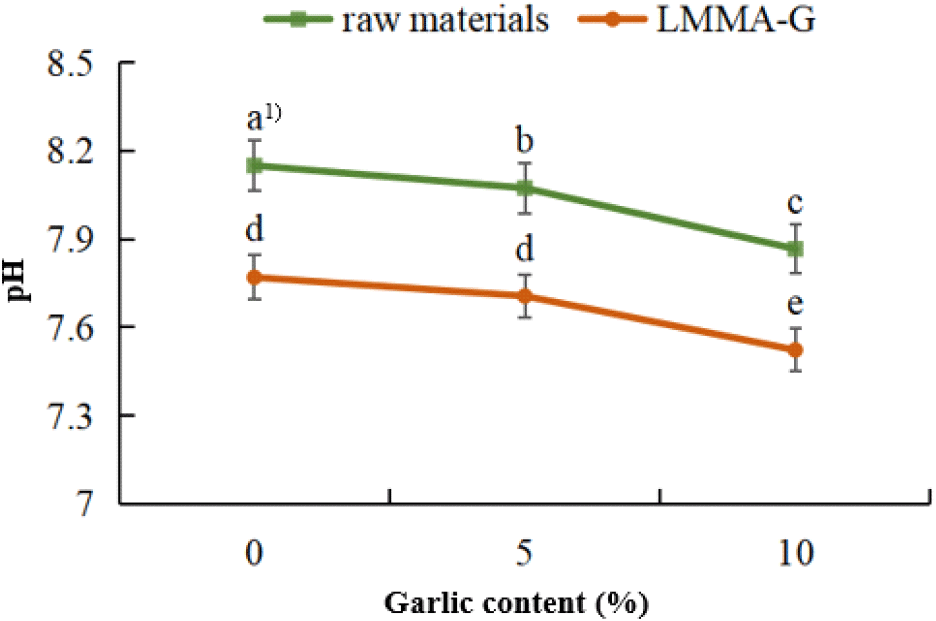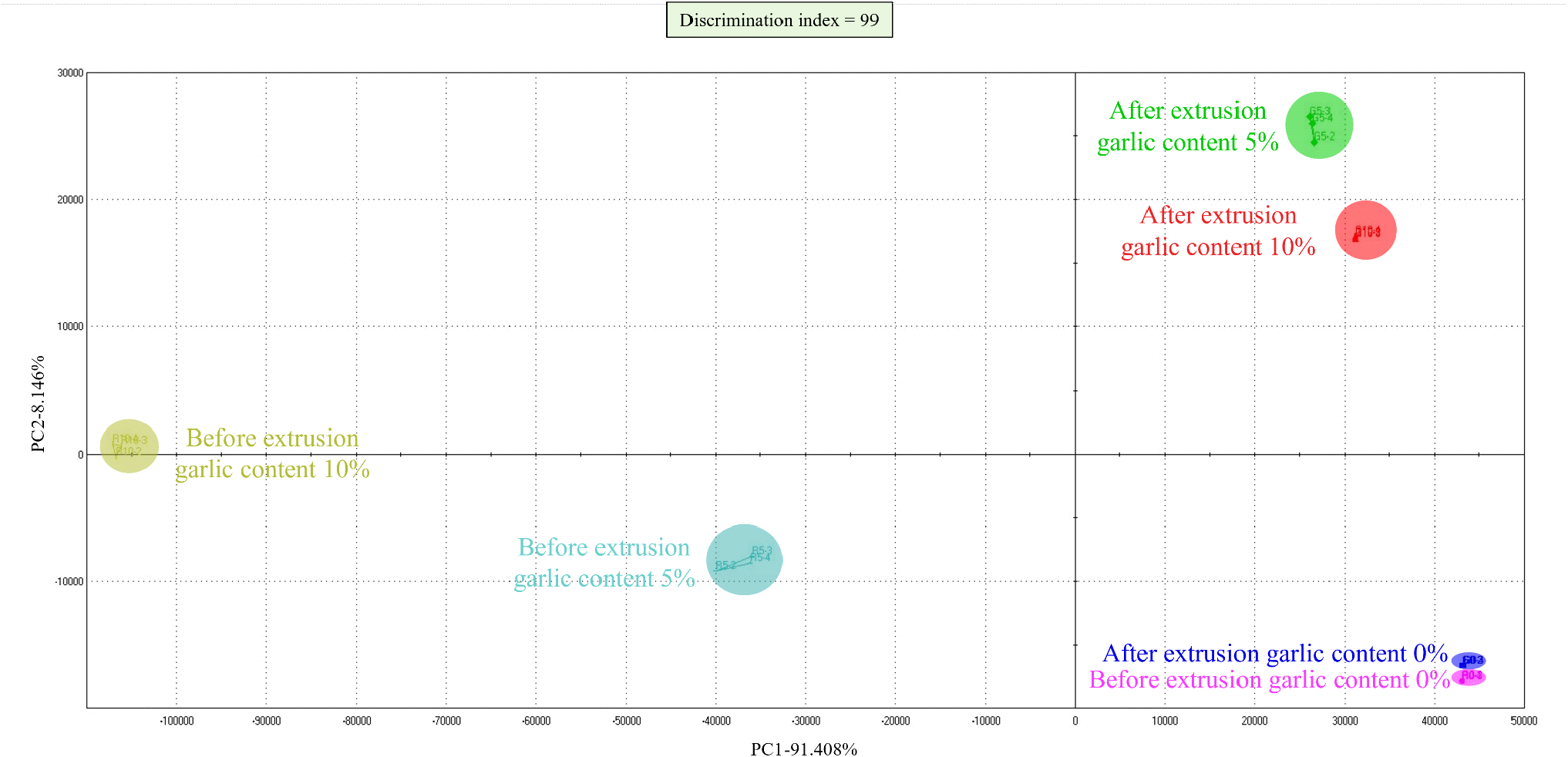1. Introduction
Increasing greenhouse gas emissions led to a rise in the Earth’s average temperature and sea levels. If sea levels rise, coastal low-lying areas will be submerged, causing mass migration and a series of serious global problems (Park, 2018). Livestock accounts for 14.5% of total anthropogenic greenhouse gas emissions (Gerber et al., 2014). The increase in livestock is driven by population growth. According to United Nations data, the current world population of 7.2 billion is expected to increase to 9.6 billion by 2050 and 10.9 billion by 2100 (Gerland et al., 2014). To address the environmental issues arising from the growing global population, alternative food sources that meet meat demand are needed.
Future foods include meat alternatives, cultured meat, and edible insects. Among them, meat alternatives are plant-based protein products made with essential amino acids beneficial to the human body, low saturated fats, and no cholesterol. Meat alternatives have gained considerable attention due to concerns about environmental pollution, animal ethics, and health issues. A representative method for manufacturing plant-based meat alternatives is extrusion, a physical texturization method that restructures protein using high temperature and pressure (Song et al., 1994). Low-moisture meat alternatives made through the extrusion process are easy to handle and store due to drying treatment. High-moisture meat alternatives produced by the extrusion process use cooling molds to obtain products with good fiber texture (Kollmann et al., 2023).
The raw materials for plant-based meat alternatives are mostly plant-derived proteins (Kołodziejczak et al., 2022). Considering solubility, cost, and processing functionality, soy and pea proteins and wheat gluten are most widely used (Sha and Xiong, 2020). Soy protein is a relatively high-quality protein because it is composed of essential amino acids evenly (Kim, 2018). Additionally, soy protein is used to improve the yield and texture of meat alternatives (Kim et al., 2009). However, the off-flavor of soy protein is the biggest obstacle in the manufacturing and sensory evaluation of plant-based meat alternatives (Maheshwari et al., 1997). The off-flavor is produced by the action of the lipoxygenase enzyme found in soybeans. Inhibiting the lipoxygenase enzyme is expected to provide a solution to the soy flavor problem (Iassonova et al., 2009). Off-flavor components can negatively affect consumers’ perception of plant-based meat alternatives. Besides soy protein, other legume raw materials used in plant-based meat alternatives can also produce off-flavors. These sensory issues are a limitation of meat alternative manufacturing technology, and many active studies are being conducted to solve this problem.
Garlic (Allium sativum L.), belonging to the Liliaceae family, is a plant of the genus Allium, cultivated in both southern and northern regions of China. Garlic contains many sulfur-containing compounds such as allicin, which gives it unique aromatic properties (Kang et al., 2014). Moreover, garlic is used not only as a spice but also has various biological effects, including lowering blood pressure, anti-cancer properties, reducing cholesterol, and anti-aging effects (Kim et al., 2010). Dried powdered garlic has shown a relatively high inhibition rate of 80-85% on the activity of lipoxygenase (Kim et al., 1993). Adding garlic, which effectively inhibits the activity of the lipoxygenase enzyme that produces off-flavor components, is expected to have a positive impact on improving the off-flavor of plant-based meat alternatives. Although studies have been conducted on the components and functionality of additives related to off-flavors in plant-based meat analogs (Kyriakopoulou et al., 2021), research on the impact of garlic-added extruded meat alternatives on soy off-flavor has not yet been conducted.
Therefore, this study investigated the changes in off-flavors and physicochemical properties of meat analogs using freeze-dried garlic powder. Low-moisture extrusion cooking was performed on mixtures of isolated soybean protein and different proportions of freeze-dried garlic powder (0%, 5%, and 10%). The study aimed to determine the effect of garlic powder addition on the physicochemical and textural properties. An electronic nose was used to measure the impact of garlic powder on the off-flavors of isolated soybean protein-based meat analogs.
2. Materials and methods
The materials used in this experiment included isolated soy protein (ISP, Pingdingshan TianJing Plant Albumen Co., Ltd., Henan, China) and freeze-dried garlic powder (Namhae Garlic Research Institute, Namhae, Korea). Freeze-dried garlic powder was added to the ISP in contents of 0%, 5%, and 10%. The moisture content of each mixture was 6.81±0.06%, 6.61±0.02%, and 6.50±0.01%, respectively. The samples were used after being mixed for 36 h.
The extruder used in this experiment was a co-rotating twin-screw extruder (THK31-No. 4, Incheon Machinery Co., Incheon, Korea). The screw had a length-to-diameter ratio of 23:1 and a diameter of 3 cm. The extrusion process parameters were set as follows: raw material feed rate of 100 g/min, moisture content of 35%, screw speed of 250 rpm, and barrel temperature of 150°C. The low-moisture meat analogs added with freeze-dried garlic powder (LMMA-G) were dried at 50°C for 24 h. Some of the samples were cut into small pieces of 1 cm in length, while others were ground and sieved to obtain samples between 50 and 70 mesh.
To analyze the appearance structure of the low-moisture meat analogs, the image processing software Image J (1.8.0, National Institutes of Health, Bethesda, MD, USA) was used. The LMMA-G samples were hydrated, and cross-sectional images were taken. The process was repeated ten times to measure the number of pores. The average number of pores and the standard deviation were calculated using Image J.
Specific mechanical energy (SME) input represents the amount of electrical energy consumed per unit mass by the extruder. It is calculated by the difference in power during raw material input and motor idling, divided by the production rate of the extruded material. The Equation (1) is as follows (Ryu, 1997):
where Pi is the electrical power during raw material input (J/s), P0 is the electrical power during idling (J/s), and F is the production rate (g/s).
The method by Gu and Ryu (2018) was slightly modified to measure the expansion ratio of LMMA-G at the die. A caliper (942000 IP67, Brütsch/Rüegger Tools Ltd., Urdorf, Switzerland) was used to measure the length and width of LMMA-G samples with different garlic content. The measurements were taken 10 times, and the average values were used to calculate the expansion ratio. The weight was measured using glass beads and a graduated cylinder to calculate the piece density. The Equation (2) and (3) are as follows:
where M1 is the extrusion sample cross section area (cm2) and M2 is the die cross section area (cm2).
where W1 is the weight of extrudate (g), W2 is the weight of glass bead (g), D is the density of glass beads (g/cm3).
This experiment of water holding capacity (WHC) was modified based on the method by Lin et al. (2022). Four g sample of block LMMA-G was weighed and mixed with 100 mL of distilled water. The mixture was hydrated in a 90°C water bath for 20 min, then drained using a 20-mesh sieve for 15 min. The weight was measured again, and the average value and standard deviation were calculated using the Equation (4).
where W1 is the initial weight of the sample (g), W2 is the weight of the hydrated sample after draining (g).
The method by Gu and Ryu (2018) was slightly modified to determine the integrity index. LMMA-G samples were placed in 100 mL of distilled water and hydrated in a 90°C water bath for 20 min, followed by sterilization in an autoclave at 121°C for 15 min. The samples were then cooled under running water, homogenized with a homogenizer (HG-15D, Daihan Scientific Co., Ltd., Wonju, Korea) at 15,000 rpm for 1 min, filtered through a 20-mesh sieve, rinsed for 30 s, and dried at 105°C for 24 h before weighing. Equation (5) was used to calculate the integrity index.
The determination of nitrogen solubility index (NSI) was carried out using a slightly modified method of Daun and Kisilowsky (1994). Zero point one g powdered sample was added to 5 mL of 0.5% KOH solution and shaken at 120 rpm in a shaker (SI-300R, Jeio Tech Co., Ltd., Gangneung, Korea) for 30 min. The mixture was then centrifuged at 3,000 rpm for 30 min, and the supernatant was collected. The nitrogen content in the supernatant was measured using the ninhydrin method (Starch, 2001). For the determination of total nitrogen content, a 0.1 g sample was added to 5 mL of 6 N hydrochloric acid and hydrolyzed at 100°C in a thermo-shaker (MS-100, Thermo Fisher Scientific Inc., Waltham, MA, USA) at 250 rpm for 24 h. After hydrolysis, 5 mL of distilled water was added to dissolve the hydrolysate. The mixture was then centrifuged at 3,000 rpm for 30 min, and the supernatant was collected and measured using the ninhydrin method. The NSI was calculated using the following Equation (6):
The method was modified based on Jeong et al. (2021). One g sample was weighed, and 8 mL of distilled water was added. The mixture was homogenized using a homogenizer (HG-15D, Daihan Scientific Co., Ltd.) and then filtered through filter paper. The pH value of the filtrate was measured using a pH meter (Orion Star A211, Thermo Fisher Scientific Inc.) to understand the effect of garlic addition and the extrusion process on the pH of the meat analog.
This experiment aimed to study the effect of different garlic content on the texture properties of meat analogs. The LMMA-G samples were hydrated in a 90°C water bath for 20 min and then drained for 15 min. A texture analyzer (Z0.5 TS, ZwickRoell Co., Ltd., Ulm, Germany) was used to measure parameters such as springiness, chewiness, and cohesiveness. Each measurement was repeated six times.
where D1 is the original compression distance, D2 is the distance of the detected height during second compression.
where A1 is the area of the work during the first compression, A2 is the area of the work during the second compression.
where F is the maximum force during first cycle of compression.
The LMMA-G samples were hydrated in a 90°C water bath for 20 min and then drained for 15 min. The cutting strength of the samples was measured using the texture analyzer (Z0.5 TS, ZwickRoell Co., Ltd.) equipped with a Warner-Bratzler shear device from Zwick Roell. Each measurement was repeated six times. The cutting strength values of the vertical and parallel directions were used to calculate the degree of texturization using the Equation (9) and (10).
Two g sample of powdered LMMA-G and raw materials was weighed and placed into a sample vial. Aroma pattern analysis was conducted using an electronic nose (HERACLES-II-E-NOSE, Alpha MOS, Toulouse, France). The conditions for the electronic nose were set as follows: injection volume of 5,000 μL, injection temperature of 60°C, column temperature range from 50°C to 260°C, and detector temperature of 260°C. Principal Component Analysis (PCA) was performed using the Alpha MOS software to analyze the aroma patterns.
The statistical analysis of the results was conducted using the IBM SPSS Statistical software (version 27, IBM Corp., Armonk, NY, USA). A one-way analysis of variance (ANOVA) was used to analyze the data. For items with significant differences, Tukey’s honestly significant difference (HSD) test was performed at the p<0.05 level to identify specific differences between groups.
3. Results and discussion
The appearance of low-moisture meat analogs with garlic (LMMA-G) prepared by the extrusion process is shown in Fig. 1. The pores in the porous structure of low-moisture meat analogs (LMMA) are crucial factors affecting their water holding capacity (WHC). The results indicated that with the increase in garlic content, both the number and area of pores decreased. In fact, the reduction in pore area and number led to a decrease in WHC and expansion ratio. This is because the addition of garlic powder, which contains relatively more carbohydrates and fibers, to the highly expanded isolated soybean protein reduced the expansion phenomenon, resulting in fewer and smaller pores (Samard et al, 2019; Tahir et al, 2022).

Specific mechanical energy input (SME input) is one of the key system parameters affecting the degree of cooking reactions as well as the solubility, density, expansion ratio, and hardness of the final meat analog products (Zhang et al., 2023). Additionally, it provides measurable parameters related to the quality characteristics of the final product, making it an important parameter in the extrusion process (Villmow et al., 2010). SME input is the amount of mechanical energy used to rotate the screws during the extrusion process. When the properties of the input raw materials change, the SME input also changes (Woldeyes et al., 2020). Table 1 shows the SME input for extruded LMMA-G to isolated soybean protein (ISP). Although all parameters during the extrusion process were the same, the SME input significantly increased with the increase in garlic content. This is because a higher fiber content in the raw material increases the flow resistance of the melt inside the extruder. Such raw material characteristics increase the SME input (Monti et al., 2016). In this experiment, compared to the control group of ISP, the garlic powder had a higher content of fiber and carbohydrates (Tahir et al., 2022), which likely increased the dough’s viscosity and consequently the SME input.
The expansion ratio has a significant impact on texture, product quality, and consumer preference. Additionally, there is a negative correlation between the expansion ratio and the integrity index in LMMA, indicating that expansion ratio and density affect structural retention (Gu and Ryu, 2018). Fig. 2 shows the expansion ratio and piece density of LMMA-G. The experimental results indicate that the expansion ratio significantly decreased as the garlic powder content increased. When the garlic powder content was 0%, 5%, and 10%, the expansion ratios were 2.70±0.17, 2.50±0.14, and 2.06±0.17, respectively. This suggests that the addition of garlic powder reduced the expansion at the nozzle of the extruder. The results for piece density showed that the density remained constant at 0.02±0.00 g/cm3 regardless of the garlic content. Although the expansion ratio decreased, the piece density remained unchanged. This could be because the reduction in volume per unit length was accompanied by a corresponding decrease in mass. Therefore, while garlic powder reduced the expansion ratio at the nozzle, it had little effect on density due to the consistent ratio of mass to volume during extrusion.

Water holding capacity (WHC) is a quantitative indicator of the ability of extruded products to absorb water. The more expanded the extruded product, the higher WHC was observed because the surface area available to retain water increases (Lin et al., 2022) Table 1 shows the WHC of LMMA-G. Studies have shown that extruded products made with ISP have higher WHC than those made with other plant proteins (Samard et al., 2019). This is because meat analogs based on ISP produce more expanded structures, which can absorb more water. In this experiment, as the amount of garlic powder increased, the WHC of the low-moisture meat analogs decreased. This may be due to the garlic powder altering the expanded structure formed by the isolated soybean protein, thereby reducing the WHC. According to Haritha et al. (2014) reported developed and evaluated ready-to-eat extruded snacks, this result was consistent with their findings.
The integrity index represents the residue of meat analogs after undergoing hydration, high pressure, homogenization, and drying processes. An increase in the binding force between raw materials leads to a higher integrity index value (Samard and Ryu, 2019). Table 1 shows the integrity index of ISP LMMA-G. The results indicate that the integrity index significantly decreased as the garlic content increased. Lee and Lee (2011) found that garlic has higher crude fiber and crude fat content compared to isolated soybean protein. High-fat raw materials are prone to lipid peroxidation during extrusion, and their binding force weakens at high temperatures (Tumuluru et al., 2013). Therefore, it is believed that the crude fat content in garlic reduces the binding force with ISP powder.
The nitrogen solubility index (NSI) is influenced by the residence time of protein melts in the extruder barrel and the physical forces applied. NSI is inversely related to the integrity index, hardness, and chewiness. When the integrity index, hardness, and chewiness decrease, the NSI increases (Samard and Ryu, 2019). NSI can selectively detect highly water-soluble amino acids and serve as an indicator of the degree of protein denaturation during the extrusion process (Hanet et al., 1989). Table 1 shows the NSI of extruded meat analogs with different levels of garlic powder added to isolated soybean protein. The crude fat and crude fiber content in garlic reduces the binding force with proteins, leading to lower integrity index values, physical properties, and cutting strength. Therefore, it is believed that the addition of garlic powder inhibits protein denaturation.
Fig. 3 shows the pH values of LMMA-G. Changes in pH can affect freshness, WHC, and texture (Park et al., 2017). An increase in pH affects the decomposition of proteins into alkaline ammonia and promotes microbial growth (Han et al., 2024). However, when the pH value approaches the isoelectric point of proteins, pH 5.0-5.4, it may negatively affect the quality characteristics of protein-based food products such as meat analogs (Kim et al., 2022). Before and after extrusion, the pH values decreased with the addition of garlic, and this trend remained consistent post-extrusion. This decrease in pH is likely due to the inherently lower pH of garlic powder. In this study, although the pH decreased with the addition of garlic powder, the decreased pH did not correspond to the isoelectric point range of the protein, suggesting that the decrease in pH due to garlic powder did not directly affect the deterioration of quality. Shin et al. (2011) found that the pH of pork sausages decreased with the increased addition of black garlic extract, which is consistent with the results of this experiment.

A single compression is one of the mechanical methods used to quantify the texture of food by determining parameters such as springiness, chewiness, and cohesiveness through force-time curves of the samples (Schreuders et al., 2019). Table 2 shows the TPA results of low-moisture meat analogs with added freeze-dried garlic powder. The results indicate that the addition of garlic powder decreased both springiness and cohesiveness. Garlic has a higher fiber content compared to isolated soybean protein (Lee and Lee, 2011). Excessive addition of crude fiber can reduce the springiness and texture of meat analogs (Zhang et al., 2023). The higher fiber content in garlic powder weakens the binding force between the structures, leading to reduced springiness and cohesiveness.
The cutting strength, which is related to product quality, measures the cutting strength of meat analog samples in both longitudinal and transverse directions (Zahari et al., 2020). Cutting strength values indicate the force required to cut the samples and serve as an indicator of the texture formation of meat analogs. The degree of texturization evaluates the formation of fibrous structures (Chen et al., 2010). Table 2 shows the cutting strength and degree of texturization results of low-moisture meat analogs with added freeze-dried garlic powder. The results suggest that as the garlic powder content increased, there were no significant differences in cutting strength and degree of texturization. This indicates that the addition of garlic powder did not affect the cutting strength and degree of texturization of isolated soybean protein.
The electronic nose sensors identify differences in volatile compounds based on gas chromatography principles and classify odors according to aroma patterns (Ali et al., 2020). The electronic nose is widely used in various industries, including food, automotive, packaging, cosmetics, and pharmaceuticals (Wilson and Baietto, 2020). Fig. 4 presents the principal component analysis (PCA) results of the aroma components of ISP raw materials and LMMA-G powder, as analyzed by the electronic nose. The PCA results show that the value of first principal component (PC1) is higher than that of second principal component (PC2), indicating that PC1 contributes more to the aroma differences. Based on the PC1, the extruded meat analogs with garlic and the raw material before extrusion without garlic were located in the positive direction, and the raw material before extrusion with garlic was located in the negative direction. Based on the PC2, the extruded meat analogs with garlic was located in the positive direction, and the raw material before extrusion and the extruded meat analogs without garlic were located in the negative direction. Through this, it was confirmed that the flavor of the product was clearly distinguished depending on whether garlic was added and before and after the extrusion process. This is believed to be because volatile flavor compounds were formed as proteins were decomposed into amino acids and peptides due to the high temperature inside the extruder (Jiang et al., 2024). In addition, allicin, a unique flavor component of garlic, is thought to have contributed to the distinction of flavor characteristics (Kwon, 2003).

The primary off-flavor compound in legume-based foods is hexanal. Inhibiting or masking the formation of off-flavor volatile compounds can improve consumer perception of plant-based meat analogs (Yuan et al., 2023). Table 3 shows the impact of adding garlic powder on the volatile aroma components of raw materials and meat analogs, as analyzed by the electronic nose. The results indicate that the peak areas at MXT-5FID1 column RT 49.78 and MXT-1701-FID2 column RT 50.34 decreased with the addition of garlic powder. These peak areas correspond to hexanal components. Although there were no significant differences between raw materials before extrusion, the peak areas significantly decreased in the samples after extrusion. This indicates that the addition of freeze-dried garlic powder reduced the primary off-flavor component, hexanal, in isolated soybean protein.
RT, retention time; R0, raw materials with 0% freeze-dried garlic content; R5, raw materials with 5% freeze-dried garlic content; R10, raw materials with 10% freeze-dried garlic content; G0, extruded meat analogs with 0% freeze-dried garlic content; G5, extruded meat analogs with 5% freeze-dried garlic content; G10, extruded meat analogs with 10% freeze-dried garlic content.
1-Propanol is a volatile saturated alcohol. Saturated alcohols have weaker odor descriptions compared to unsaturated alcohols and contribute less to food aromas (Boo et al., 2021). The odor descriptions for 1-propanol detected at MXT-5FID1 column RT 24.99 and MXT-1701-FID2 column RT 27.57 included alcoholic, fruity, musty, plastic, and pungent smells. The peak areas of 1-propanol were relatively high in raw materials containing 5% and 10% freeze-dried garlic powder.
4. Conclusions
This study investigated the effects of adding freeze-dried garlic powder on the off-flavors and characteristics of extruded meat analogs. The results showed that with the addition of garlic powder, the number and area of pores in the isolated soybean protein, as well as the expansion ratio, decreased, leading to a reduction in water-holding capacity. Additionally, the values for springiness, cohesiveness, cutting strength, degree of texturization, and integrity index also decreased, while the nitrogen solubility index, which is inversely related to the integrity index, increased. The electronic nose indicated that the peak area of hexanal, an off-flavor component in soybeans, decreased with the addition of garlic. Therefore, adding garlic reduces the texture quality of extruded meat analogs, it effectively decreases the off-flavor components of soybeans, suggesting that garlic has potential as an additive to reduce off-flavors in plant-based meat analogs.
